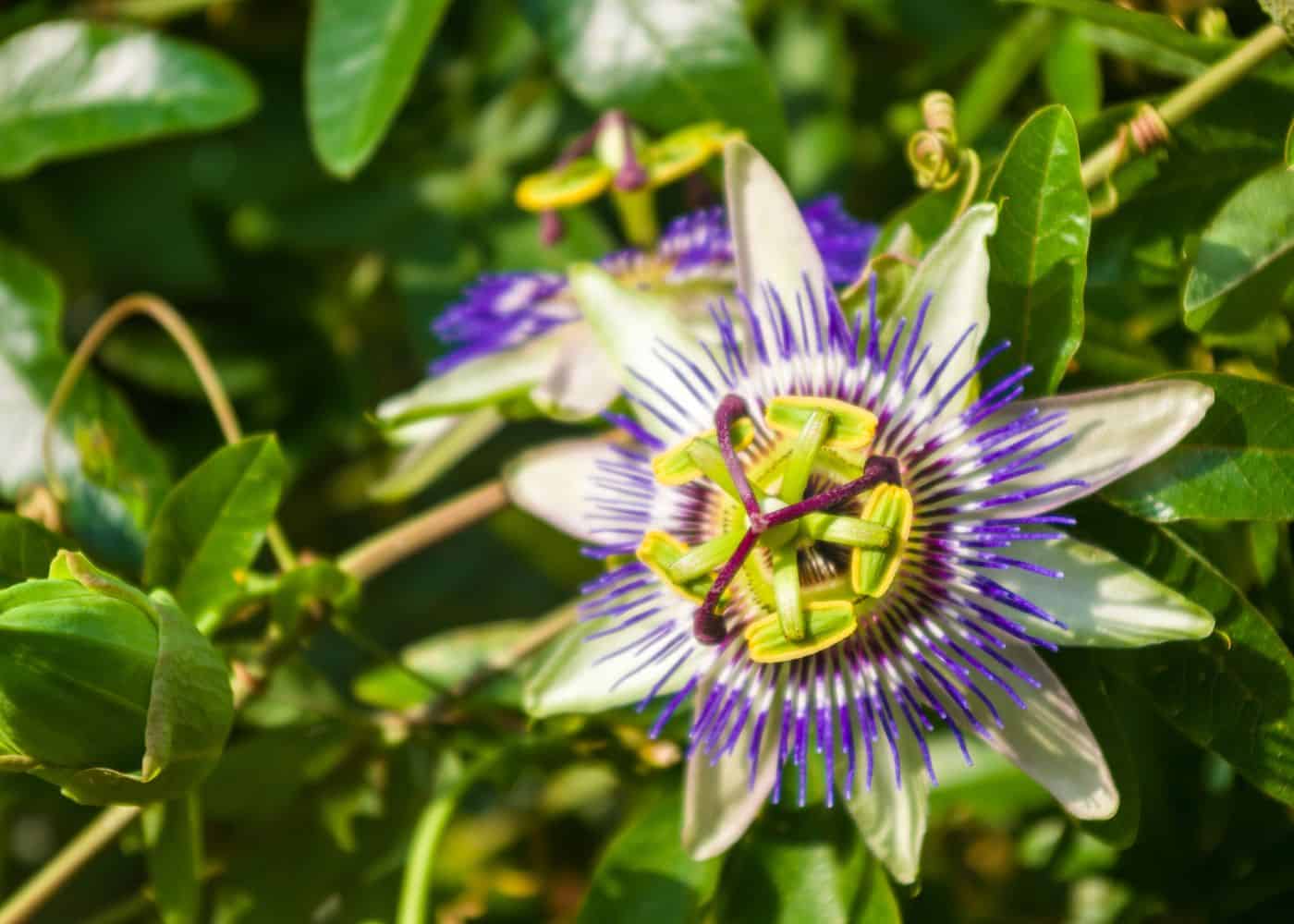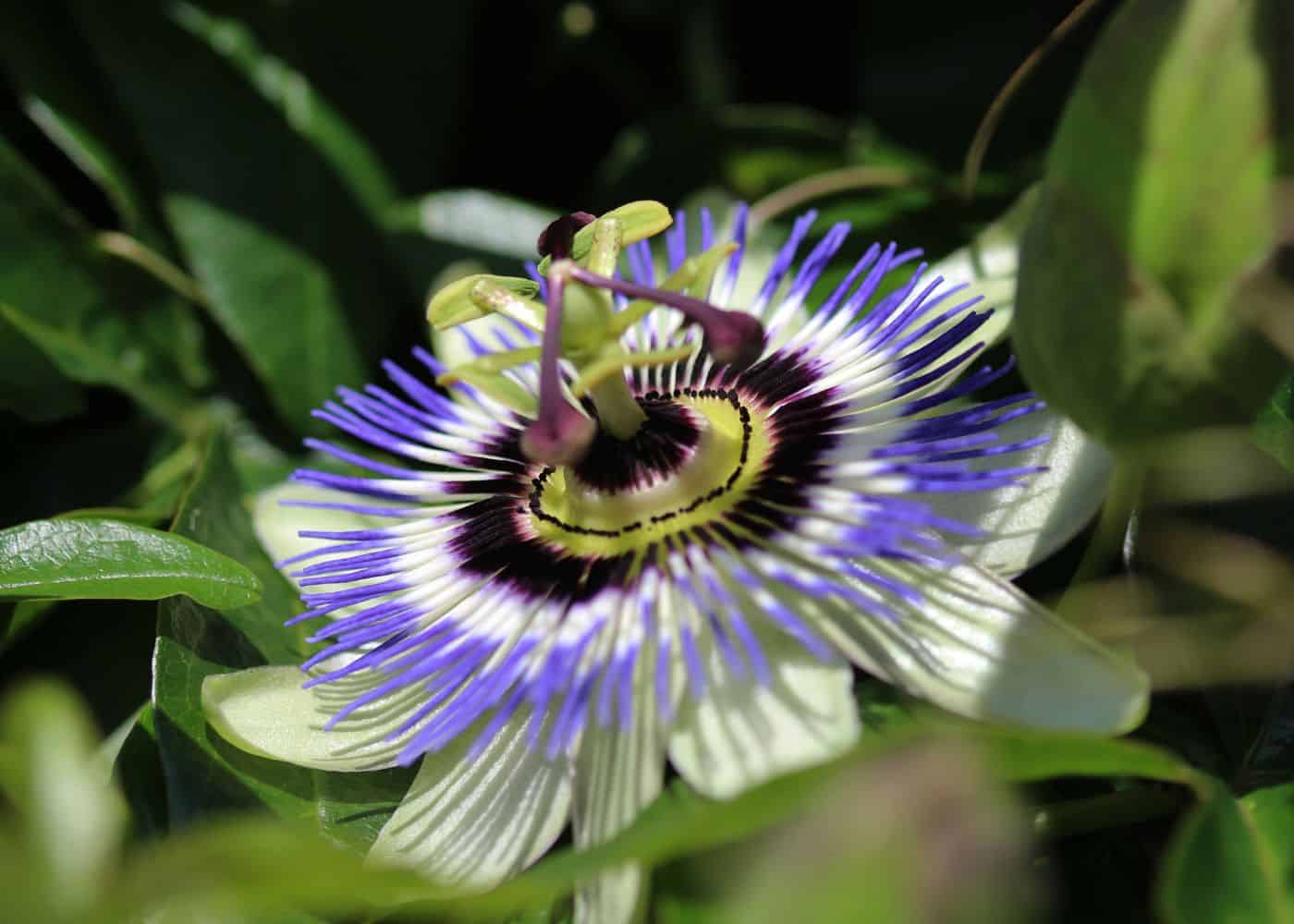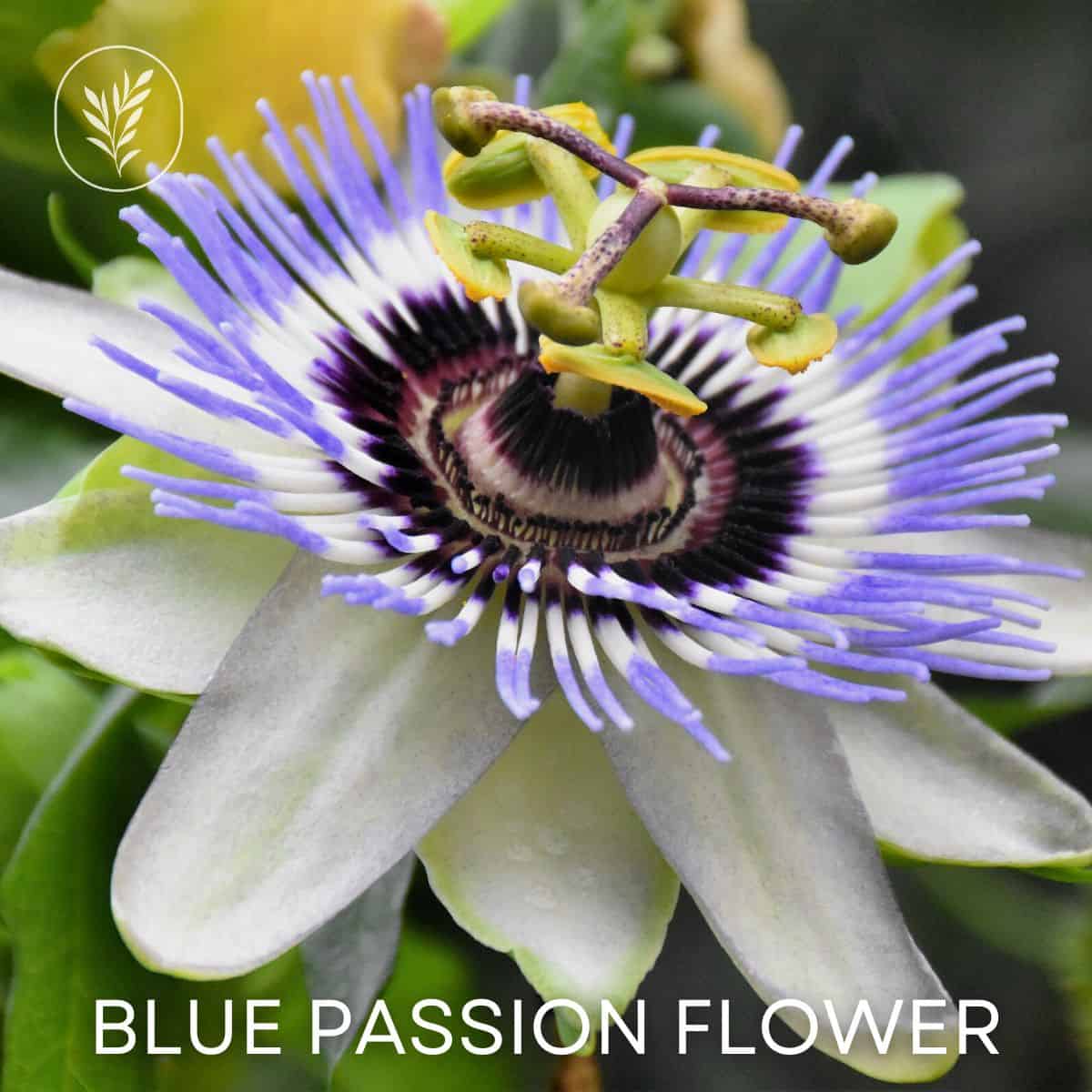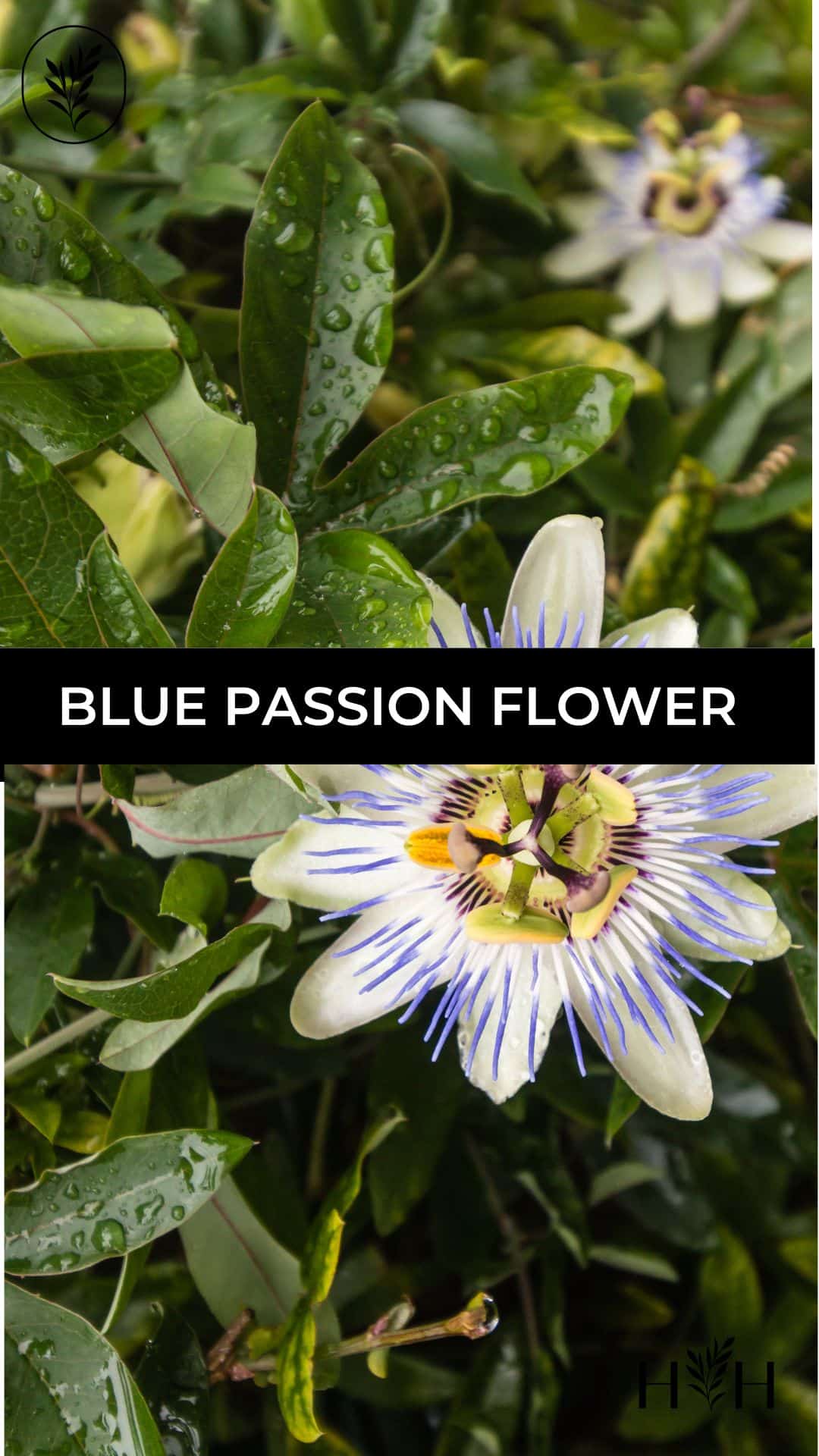The blue passion flower, part of the Passiflora genus commonly known as passion fruit, is an exotic vine with almost alien-like blooms that you can’t help but stare at. Although they can be invasive if not controlled, their quick growth and versatility are incredibly useful in the garden.
Blue passion flower is easy to grow, ideal for climbing up structures in your garden to provide living cover and wonderful shade. They need full sun to produce the most flowers and fruits, but will appreciate some protection from the midday sun in harsh summer climates. After regular watering, the most important maintenance task is pruning to limit spread and stop the vines from suffocating nearby plants.
What is blue passion flower?
The blue passion flower, scientifically known as Passiflora caerulea, is a fast-growing vine native to South America. It is part of the Passiflora genus, containing many species of tropical vines, including the popular common passion fruit (or granadilla) enjoyed around the world.
The blue passion flower is known for its striking blooms that look unlike any other flower you may have in your backyard. The flowers are not only captivating but also have a light fragrance that adds to their interest and beauty.
The vine even produces small brightly colored fruit that is (somewhat) edible. However, when eaten raw, the taste is not as sweet and enjoyable as the common passion fruits you may be used to.
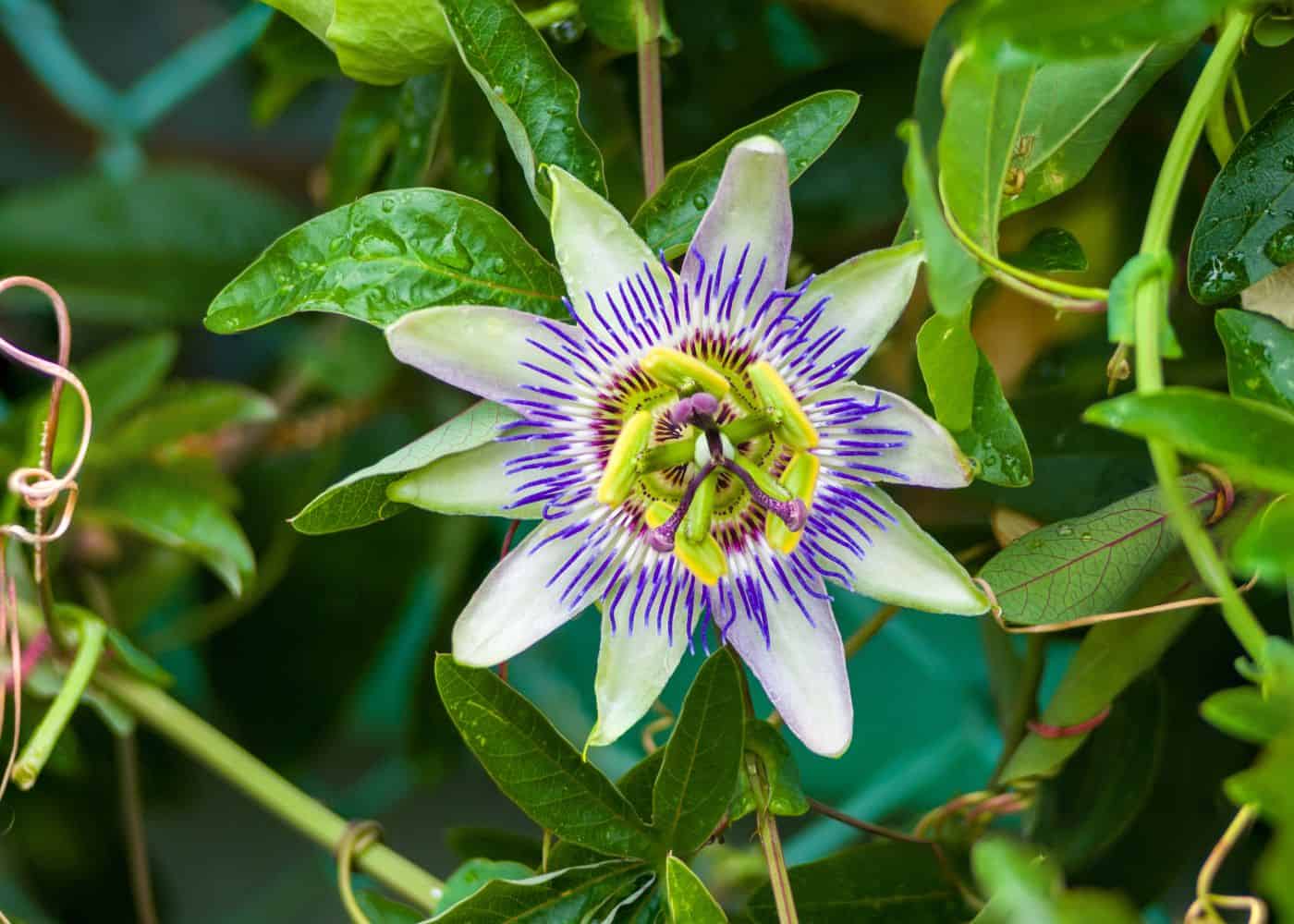
Where does blue passion flower grow best?
Blue passion flowers are native to subtropical regions and thrive best in warm gardens. In cold climates, the plant can still be grown as an annual or in a container, as long as it is moved indoors during the cooler months to protect the vines from frost damage.
This quick-growing vine can become quite large, requiring support and plenty of space to spread. My favorite use for any plant in this genus is to cover arches or pergolas in edible gardens. However, you will need to keep an eye on the spread of the plant to stop it from smothering nearby veggies.
Light
Blue passion flowers need plenty of sunlight to grow as quickly as they can and produce abundant blooms. Aim for at least six hours of direct sunlight per day in most moderate regions, preferably closer to eight if the vines are underperforming. In regions with intense summers, some light afternoon shade will prevent heat stress and stop the leaves from scorching, improving overall health and growth.
Temperature
Blue passion flower is more tolerant of temperature dips than you may expect, but it thrives best in climates with temperatures ranging between 65F and 85F. The plant can handle some minor light frost, but not much – so it’s important to provide extra protection during colder months or bring them indoors.
If temperatures drop below 30F for long periods, the vines and roots will likely begin to die off. Mulching and frost blankets can help with sudden dips, but it’s best to keep them out of these conditions altogether for strong long-term growth.
Soil
Like most garden plants, blue passion flower prefers well-draining, loamy soil with a slightly acidic to neutral pH. Good drainage is vital to prevent root rot, especially in areas with plenty of rainfall where waterlogging is common. Amend clay soil with sand and organic matter to improve its drainage properties before planting, or plant in containers where soil conditions can be meticulously controlled.
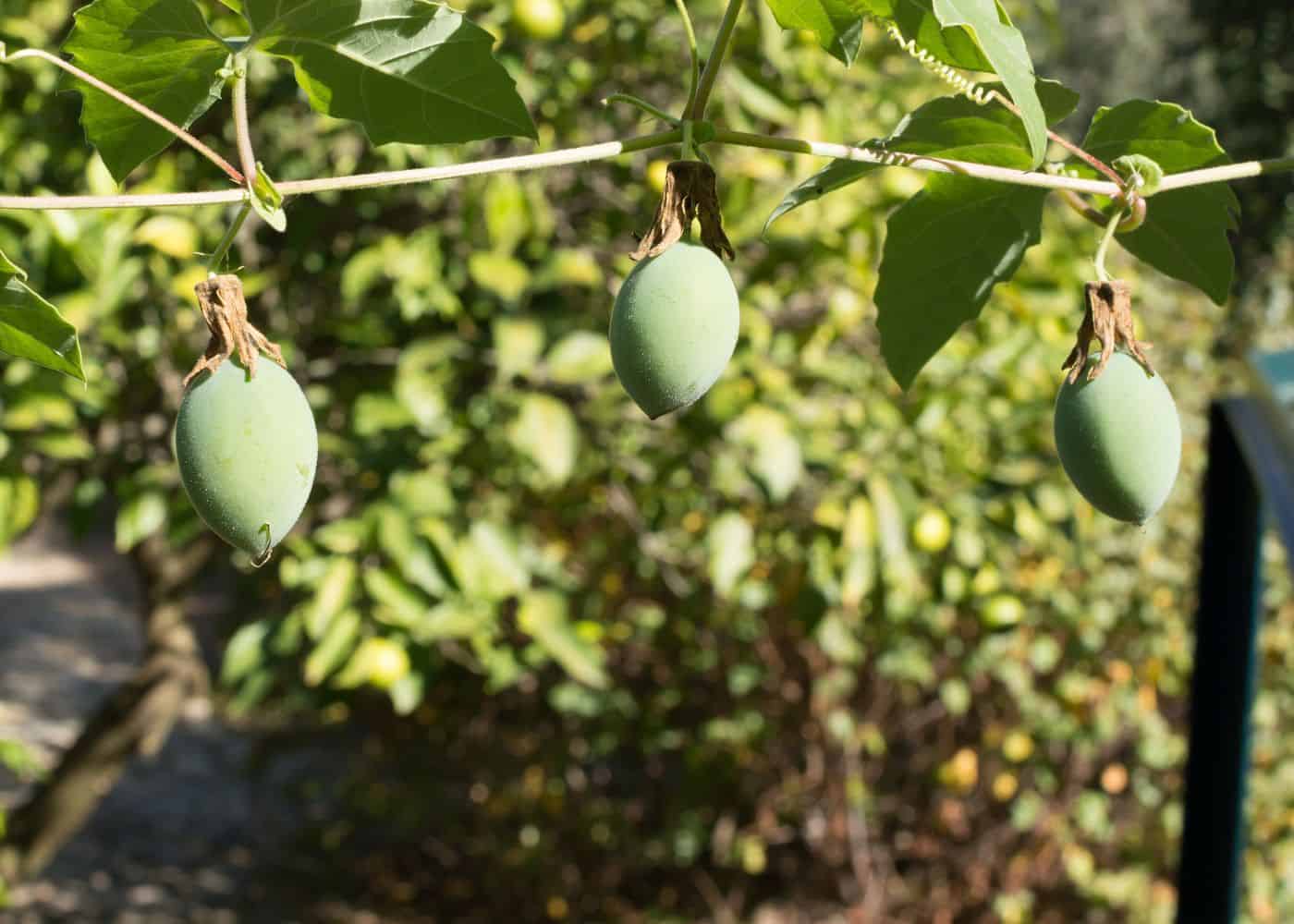
How to care for blue passion flower
With the right environment, growing blue passion flowers is relatively easy. These quick growers will shoot up with the right water, feeding, and maintenance.
Water
Blue passion flowers require regular watering to sustain strong growth, preferring slightly moist soil over dry and compacted soil. Depending on rainfall, they can be watered around an inch a week along with the rest of your garden. They will need extra moisture when planted in containers as the soil will dry out quickly, especially in full sun conditions.
Fertilizing
Although these plants grow rapidly without an extra nutrient boost, fertilizing often will encourage healthy growth and the best possible blooms. A balanced, slow-release fertilizer is suitable, applied around once per season in spring and summer. Liquid fertilizers are also suitable, applied approximately once per month depending on the product. I prefer to start with a half-strength dose to avoid overfertilizing, adding more at the next interval only if the plant appears to be underperforming.
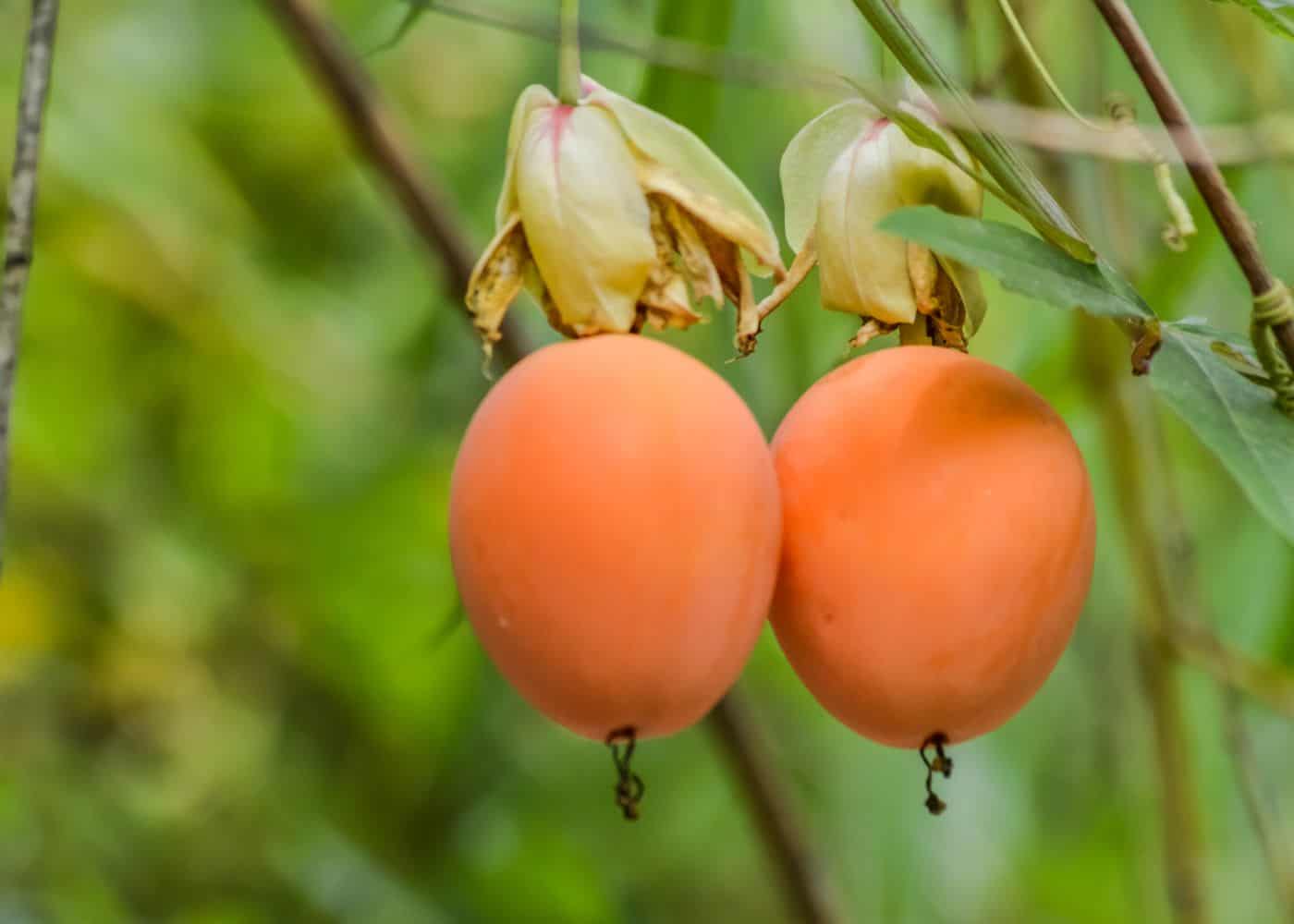
Maintenance
Pruning
The blue passion flower vine is a vigorous grower and is considered invasive in some areas, so regular pruning is needed to keep it in check. Cut them back in early spring and throughout the season if they begin to get out of hand.
Keep an eye out for any dead, damaged, or diseased growth throughout the year. Remove these sections as soon as they are spotted to prevent spread of the problem and promote new, healthy growth.
Support
As a climbing vine, the blue passion flower needs support to grow upward. Install your supports at planting time to avoid damaging the root system later on. You can use a trellis or a larger structure like a pergola. They make wonderful overhead covers for outdoor dining areas over spring and summer – especially when they are in bloom or fruiting.
Pests and diseases
Regularly inspect your plant for signs of pests like aphids and whiteflies, controlled with insecticidal soap or horticultural oil as needed until the infestation is gone. In case of a fungal disease, remove affected leaves and improve air circulation around the plant. Always tackle pest or disease problems as soon as you spot them to stop the issue from spreading around the plant and to the rest of the plants in your garden.
